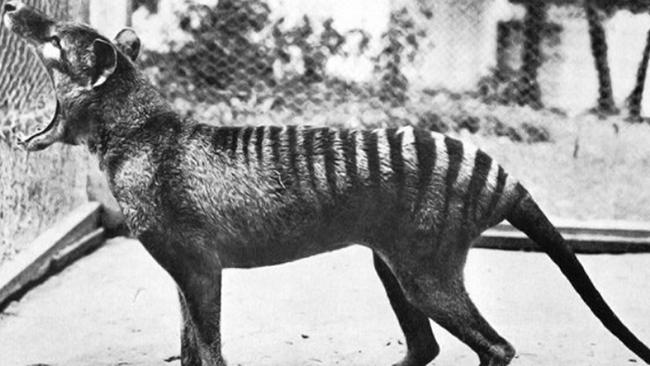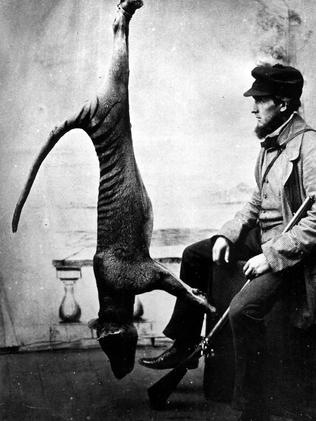Tasmanian tiger extinction linked to climate change and Tassie devils
SCIENTISTS believe they have uncovered the reason behind the demise of Tasmanian tigers and other Australian tiger species.
TASSIE tigers may have been hunted to extinction by humans but scientists have pinpointed a catastrophic event 14 million years ago which began their tragic demise.
The last-known Tasmanian thylacine, which was the largest marsupial predator that survived into recent times, died in captivity in 1936.
Today, after a comprehensive dated tree-of-life study of thylacines and other Australian tigers, which roamed the land millions of years ago, shows a dramatic climate cooling event started their decline millennia before humans arrived.
Australian National University (ANU) PhD student Shimona Kealy and Dr Robin Beck, from the University of Salford in the UK, analysed 95 modern and fossil species, including six species of tigers.

Ms Kealy said 14 million years ago global temperatures suddenly dropped by about seven degrees, transforming most of the wet, closed forests across Australia into dry, open woodlands.
However, the researchers say the demise of the tigers triggered the rise of another iconic Aussie mammal and its relatives.
“At this time of extreme cooling, we also see the rise of modern carnivorous marsupials such as the Tasmanian devil and cat-sized quolls, which are dasyurids,” Ms Kealy said.

“We think the structure of tigers’ feet and ankles might have made them better suited to closed forests with uneven surfaces, such as roots and logs, and less well suited to open woodlands.
“Dasyurids, on the other hand, have ear-bone structures that appear to be better adapted to open woodlands, allowing them to hear over greater distances than thylacines.”
The researchers analysed features of skulls, teeth, jaws and the rest of the skeleton, along with molecular gene sequences.
“While this study strongly suggests that the cooling, drying climate 14 million years ago was the key change that sparked the diversification of dasyurid species, the exact relationships between dasyurids and thylacines at this time requires further research,” Ms Kealy said.
Andrew Pask, an Associate Professor at the University of Melbourne, has also been analysing the iconic animal by studying its genetic make-up.


He said analysis shows thylacine was at the root of a group called the Dasyuromorphia, which also includes the numbat and Tasmanian devil. But there are also similarities between dogs and Tassie tigers — in terms of their body shapes.
“The two are almost identical, despite having last shared a common ancestor more than 160 million years ago — a remarkable example of so-called convergent evolution,” Mr Pask said.
“We used digital imaging to compare the thylacine’s skull shape to many other mammals and found that the thylacine was indeed very similar to various types of dog (especially the wolf and red fox), while quite different from its closest living marsupial relatives such as the numbat, Tasmanian devil and kangaroos.”
benjamin.graham@news.com.au or follow @bengrahamjourno on Twitter




